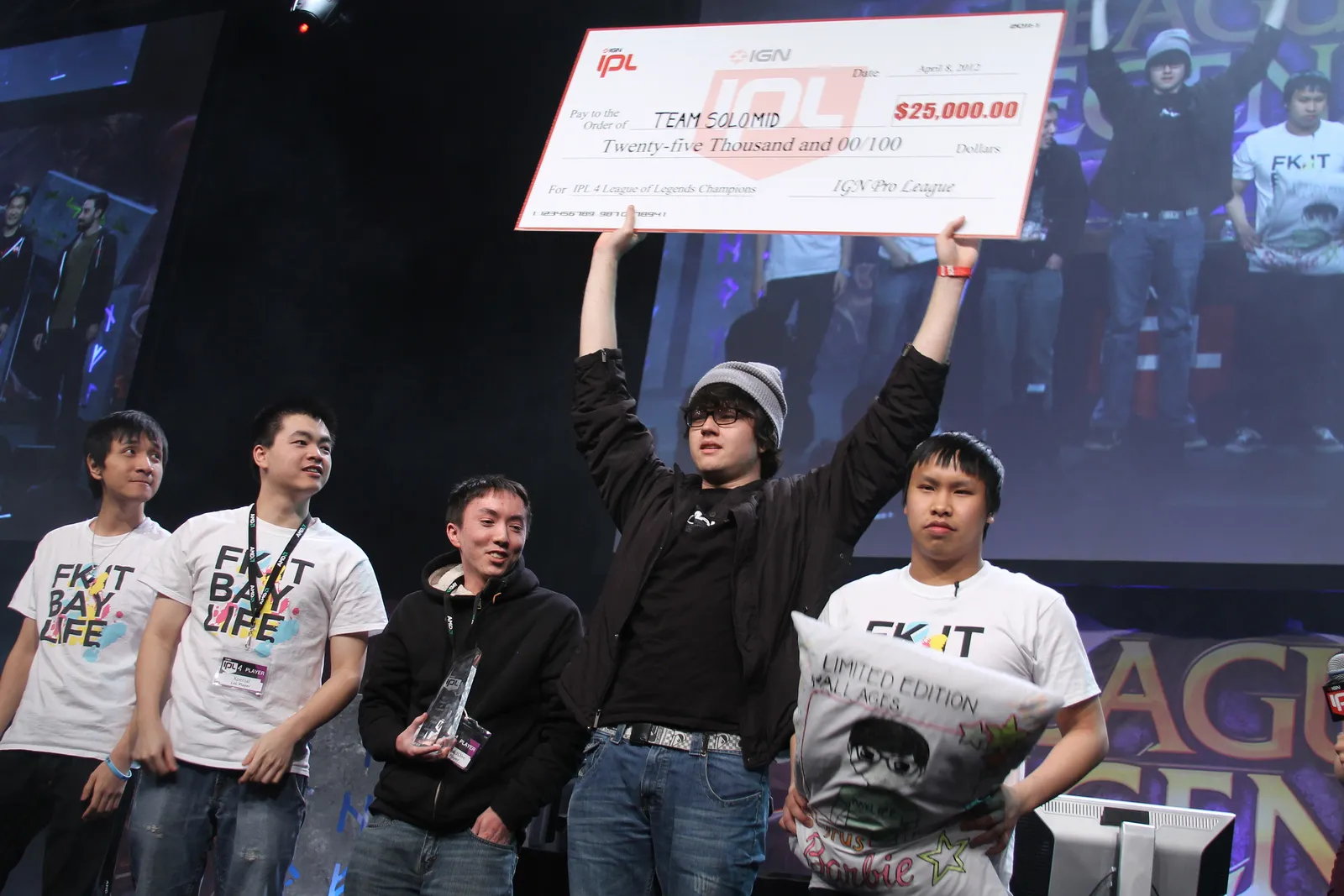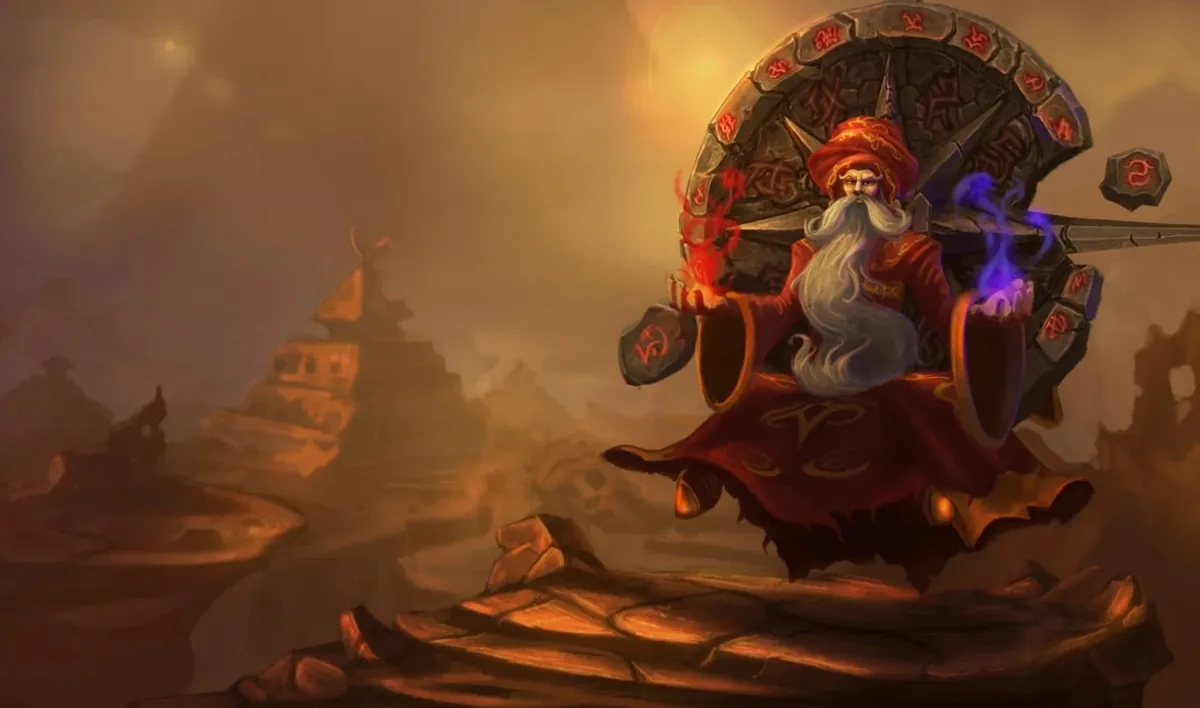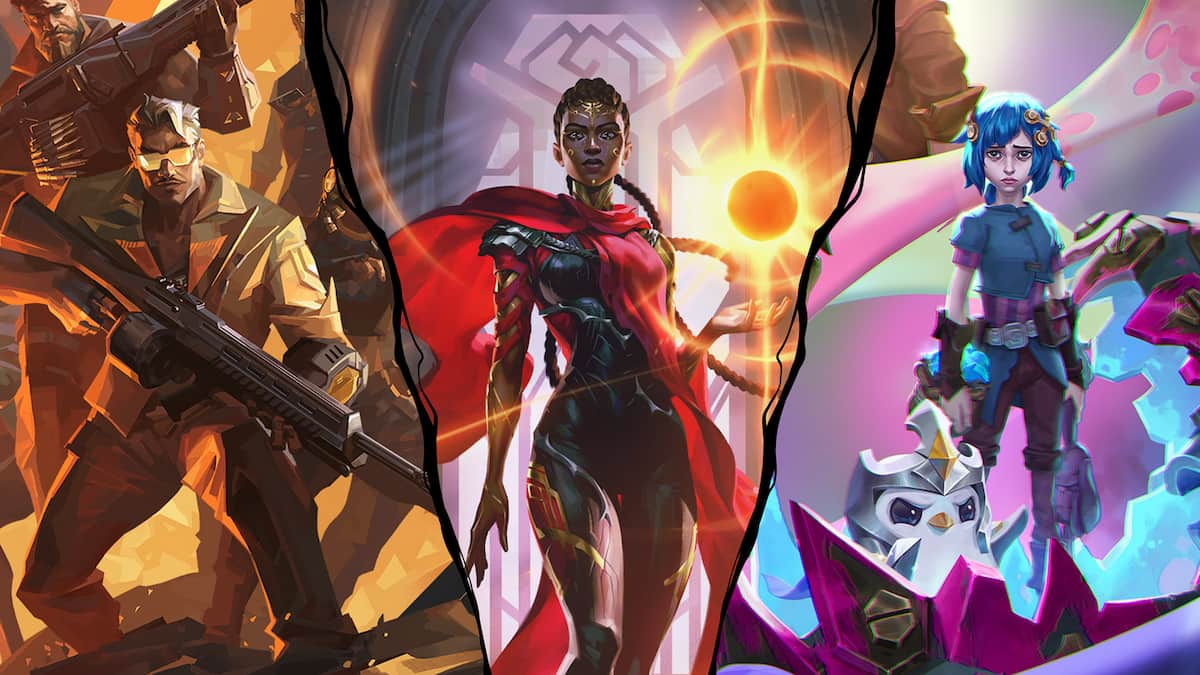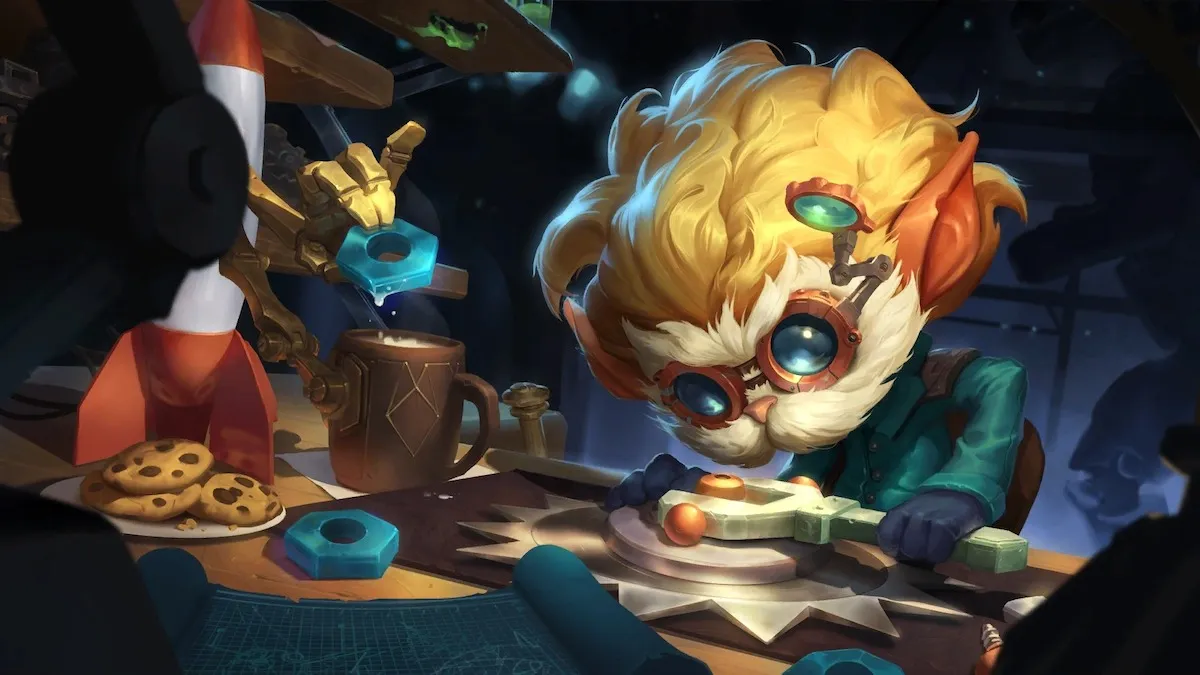Shortly after League of Legends was released in 2009, a pair of brothers climbed to near the top of the game’s competitive ladder. Andy and Dan Dinh turned their expertise into a community website, SoloMid.net, focused on creating high-level guides for the game. Two years later, Andy, better known by his in-game nickname “Reginald,” launched his own team under the SoloMid name.
Over four years have passed since the first Team SoloMid lineup took to the stage in Sweden for the Season One World Championship. By the time Riot launched its first ever League Championship Series season in 2013—ushering in a new era in League of Legends esports—TSM had assembled a lineup that would go on to be one of the most recognized in professional gaming.
The modern TSM looks a lot different, however. What happened to the pioneer players on one of the most iconic teams in North American esports?
Christian “The Rain Man” Kahmann
Christian “The Rain Man” Kahmann, otherwise known as “TRM” is the first tragedy in the tale of TSM. Kahmann wasn’t a member of the team’s first split in the League Championship Series, but he did finalize the first ever roster and helped set TSM on the road to success.
The top lane player first became famous for reaching the top of the solo queue ladder while maining Teemo. Fortunately for League fans everywhere, Kahmann wasn’t just a one trick pony for TSM.
Kahmann was one of the six that moved into TSM’s gaming house, the first in League of Legends and an investment intended primarily to help the team prepare for the Season Two World Championship. Despite a string of top-three finishes, including a bronze medal at the World Championship, Kahmann only ever took a single offline title with TSM, at MLG Providence. Four months later, after failing to repeat that MLG success, Kahmann left the team.
Dinh blamed Kahmann’s departure on their differing opinions about how much time the team should practice, with Kahmann arguing for less and teammates arguing for more. He remained at the gaming house for another month, however, before leaving the team for good. He spent time subbing for various teams in North America over the next several months, including an appearance at MLG Raleigh with the team 4Nothing in August, 2012.
While a return to the professional scene was never off the table, it seemed less and less likely as time went on. His final foray into the competitive scene was with his own lineup,Team Solo Queue, but that team ultimately failed to reach the Season 4 LCS qualification tournament. Kahmann now spends his time streaming on Twitch, mainly playing Teemo in just about any role he can, with no plans to return to competitive play.
Enter Marcus “Dyrus” Hill. Initially more of an adopted substitute for the team, Hill moved in when owner Dinh bought the first gaming house, and was a promising talent for Epik Gamer, a team lead by the other Dinh brother, Dan. The teams made an agreement to allow Hill into the house to pursue a full-time gaming career while still he still played for Epik Gamer. But when Kahmann stepped down, it made sense to bring Hill on board.
Hill’s recruitment is considered by many to be one of the best decisions in the history of League of Legends esports. Esports historian and analyst Duncan “Thorin” Shields called it the best decision Dinh ever made as TSM’s owner. It’s not hard to see why. The team would go on to secure six offline victories out of a possible seven leading into the Season two World Championship, with their only finish outside of the top spot coming in the form of a second place at the MLG Summer Arena, losing out to the Korean side Azubu Blaze.
Hill has played alongside three junglers, two mid laners, two AD Carries, and three supports in his tenure, and hasn’t ever really come close to being dropped. This is largely because, for the last three years, he’s been one of the best top laners not only in his region, but in Western League of Legends as a whole.
As for where here is he now: Well, he’s still here. Hill took to the rift donning the TSM shirt to begin yet another LCS split earlier this year. The only surviving member from TSM’s first foray into the LCS lives on.
Brian “TheOddone” Wyllie
The longest-serving starter and fan favorite, Brian “TheOddone” Wyllie was the team’s jungler when it entered the LCS era of League of Legends. As a member from the very first iteration of the lineup, Wyllie was a core member who defined TSM’s success in those early days.
Wyllie is one of the most successful players in North American history when it comes to offline victories. Throughout season two, he defined the style that became known as support jungler, popularizing champions like Maokai and Nunu. This worked perfectly for TSM, and while Wyllie was never the hard carry for his team, his help around the map peeling for the carries made him a major factor in a lot of wins.
Eventually, the game progressed to a point where support jungling was no longer the most effective way of playing the role. Despite his immense popularity and a decent overall performance on TSM, Wyllie stepped down from the starting roster in May 2014. Wyllie said this was to make room for European jungler Maurice “Amazing” Stuckenschneider, as he felt the young European player would give the team a better chance at qualifying and placing at the World Championship later that year.
The team kept Wyllie as a coach, though it’s widely believed he didn’t do much coaching at all and instead turned his attention to his thriving streaming career. A lot of professional players turn to streaming when their competitive career ends, but not many can draw the same amount of viewers as they did when they played professionally. Kahmann, for instance, often fails to hit 1,000 viewers. That wasn’t the case with Wyllie. With no return to competitive play in sight, he’s now one of the leading educational and entertainment streamers in League of Legends, boasting nearly 800,000 subscribers.
He won’t ever be considered one of the best that North America ever produced, his but success and time spent with TSM from 2011-2014 will remain one of the most successful runs in North American history.
Andy “Reginald” Dinh
Dinh, the team and organization owner and former team captain, is the driving force behind TSM’s multi-year success.
Dinh and TSM are renowned for making the best roster changes in North America, with almost every change working out in the long run. Notable examples include the acquisition of Ham “Lustboy” Jang-Sik, Marcus “Dyrus” Hill, and Soren “Bjergsen” Bjerg—who Dinh brought in to replace himself.
Dinh was also quite the talented mid laner during his playing days. He’s credited for the first ever competitive League of Legends pentakill, which he scored while representing North America in the Sound Blaster Championship in 2011. As the game and professional scene developed, it became clear that Dinh was losing his touch as a top tier player. By the time the LCS came around, he was still a capable competitor and key to TSM’s success as the team’s main shotcaller.
Dinh became known for his hyper aggressive style. He popularized the strategy of igniting an opponent as soon as he entered the lane to gain the five extra attack damage and ability power from the old mastery. This playstyle would catch up to him eventually, however. And as other teams started to take advantage, Dinh stepped down and let Bjerg to take his place. (He did make a brief, successful return in the 2014 Spring Split, however, as substitute for Bjerg, who had to return to Denmark to renew his Visa. Dinh helped the team take five victories in six games.)
Aside from this brief competitive comeback, Dinh seemingly has no desire to return to the LCS as a player, instead choosing to focus on growing his brand. As a starting player, Dinh was often the target of withering criticism from fans, largely because of his position as player, captain, and owner. Since his retirement, the public’s perception has largely changed, and while he still takes the brunt of criticism when a fan favorite gets benched or he let’s slip some trash talk on Twitter, it’s safe to say his contributions to North American League of Legends scene are now fully recognized.
Shan “Chaox” Huang
As his career with TSM reached an end, Shan “Chaox” Huang—who at one time was considered one of North America’s best—had become one of the most polarizing figures in the scene. Originally from China, the player moved to North America at a young age and was recruited by TSM for its first ever lineup as a support player.
His support days didn’t last long. Huang switched to the AD Carry position early in his career and became known as a very passive player. He’d gain small advantages in the lane phase by outfarming his opponent before punishing them later as he extended his lead further and further. This style was extremely popular in season two and allowed Huang and TSM to dominate the domestic scene. They would struggle, however, against different styles of play at the international level
Huang was still considered one of the stronger members of the team when his tenure came to an end. Performance was not a factor—instead, it was his personal relationship with Dinh. The final straw came when Huang skipped team practice—an event captured on camera thanks to the show “Gamecribs,” which was following the team’s every move. When Jason “Wildturtle” Tran scored a pentakill in the first week for the newcomer, Huang’s time as a TSM player was effectively over.
Despite never again featuring in the LCS, Huang has perhaps had one of the most interesting journeys of a former TSM player. Immediately after the split, he took a trip to explore the esports scene in China. In two months, he stayed with some of the top teams in the region, recording content, such as house tours, for his YouTube channel. Upon his return he announced his retirement from competitive League of Legends—which lasted merely three months.
His latest journey has been quite tumultuous. Team Roar was formed in November 2014, and looked like a solid lineup that could potentially challenge for a high placement in the Challenger Series. Unfortunately, due to seedings, the team faced off against Cloud9 Tempest, the strongest team in the Challenger Series at the time, and was knocked out. This spelled the end for that iteration of the Roar lineup.
But now Huang finds himself and his team returning to home soil. The reform of Roar in April 2015 saw them head over to China to participate in various amateur tournaments, where they’ve seen some success, taking victories in the Douyou Streamer Series, the WYWK tournament, and the ESCC tournament. It’s been a long time since Huang has played at the top level of his region, but he and Roar could be on their way.
Alex “Xpecial” Chu
“Life is one’s journey through life” Alex “Xpecial” Chu said in a now-famous video posted after he was benched in May 2014. Once considered the best support player in western League of Legends and one of the best in the world, Chu’s time on the team was coming to an end, and he was deliberating his future. Most had expected him to return to TSM’s starting lineup. So when he was officially cut and then later transferred to Team Curse, now known as Team Liquid, the fanbase was fairly divided.
Chu was the fourth-longest serving member of TSM, clocking three years and one month as part of the lineup. He played a vital role in TSM’s early trophy runs, their journey to becoming the most successful team in North America, and their attempts to evolve through Season two and three. Several TSM members have even said in the past that Chu would train with them 1v1 because of his extremely high level of mechanical play. But Chu also earned a reputation for passive aggressiveness, leading to problems with teammates. Dinh cited this as one of the reasons for his cut from TSM.
In May 2014, Chu joined up with Team Curse after a slew of roster changes in the support position. His position as one of the best western support players is unchanged, Ham “Lustboy” Jang-Sik is a serious challenger for the title of “best TSM support player of all time.” Chu now lanes with a former world champion—Chae “Piglet” Gwang-jin—and is part of a Team Liquid lineup that finally broke the “fourth-place curse” and looks set to make a serious title challenge against his former club and fan-favorites Cloud9.












Published: Jun 16, 2015 7:50 PM UTC